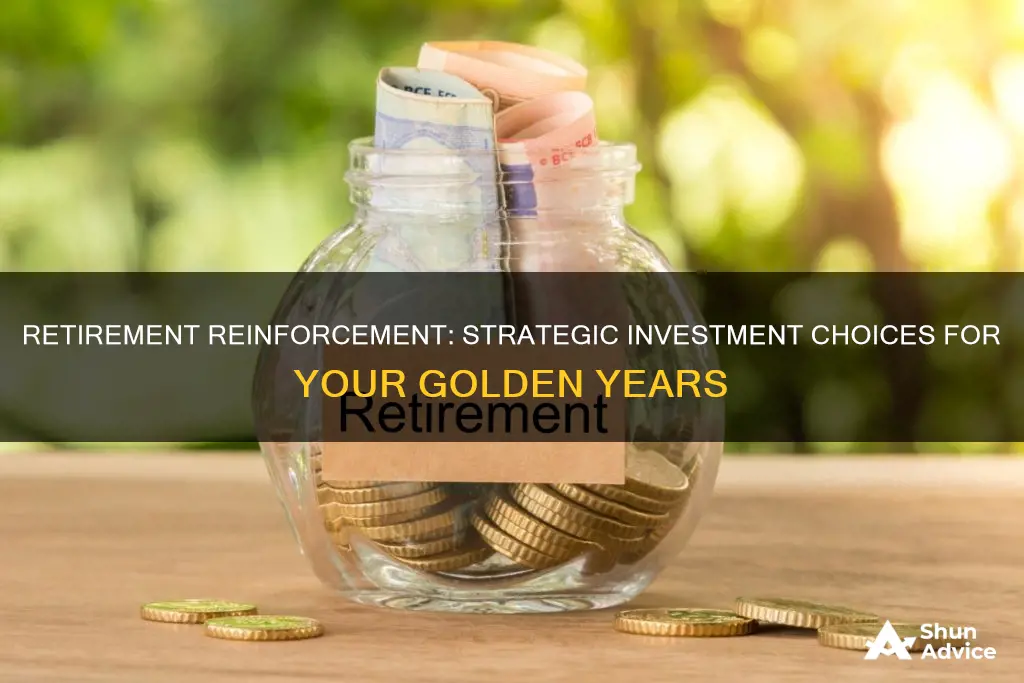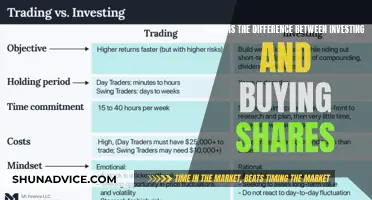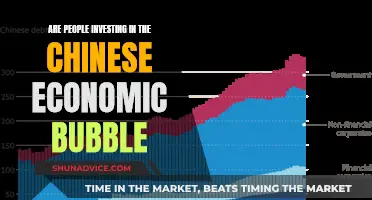
When it comes to planning for retirement, it's crucial to build a robust investment portfolio that will provide financial security for your golden years. The foundation of a retirement portfolio typically consists of stocks, bonds, and funds, with the aim of generating income and preserving capital. Here's an introduction to the key considerations for crafting a comprehensive retirement investment strategy.
Firstly, it's essential to start saving for retirement as early as possible to harness the power of compounding returns over time. The general rule of thumb is to aim for savings of around 10 times your annual salary by the time you retire. This ambitious target underscores the importance of consistent contributions and prudent investment choices.
Your retirement portfolio should be tailored to your unique circumstances, factoring in your age, risk tolerance, and financial goals. Younger investors can afford to take on more risk by focusing on growth stocks, while older individuals might shift their portfolios towards income-generating assets and capital preservation.
Diversification is a cornerstone of successful retirement planning. By spreading your investments across various asset classes, sectors, and geographies, you reduce the impact of market volatility and enhance the stability of your returns. Diversification strategies can include allocating funds to different types of equities, such as large-cap, mid-cap, and small-cap stocks, as well as exploring alternative investments like precious metals or real estate.
The balance between preservation and growth is a delicate one. While it's tempting to adopt a conservative approach to safeguard your savings, doing so too soon may jeopardise the longevity of your portfolio. Therefore, it's crucial to strike a balance, ensuring that your portfolio continues to grow while also providing a stable income stream.
Lastly, it's essential to consider the tax implications of your retirement investments. Tax-advantaged accounts, such as IRAs and 401(k)s, offer significant benefits but come with withdrawal restrictions. Understanding the tax treatment of your investments can help you maximise your returns and make informed decisions about when and how to access your funds.
| Characteristics | Values |
|---|---|
| Investment types | Stocks, bonds, funds, annuities, real property |
| Stock categories | Growth stocks, value stocks, dividend stocks, ESG stocks, small-cap stocks, foreign stocks, large-cap stocks |
| Bond categories | Short-term bonds, long-term bonds, municipal bonds, corporate bonds, U.S. government bonds |
| Fund types | Mutual funds, exchange-traded funds (ETFs), index funds |
| Investment accounts | Taxable accounts, tax-deferred accounts, tax-free accounts, Individual Retirement Accounts (IRAs), 401(k)s, Roth IRAs, Health Savings Accounts (HSAs) |
| Investment management styles | Active investing, passive investing, discretionary investing, non-discretionary investing |
What You'll Learn

Stocks
When you are younger, you should focus on the growth potential of stocks. You will have enough time to benefit from the long-term growth potential while riding out any short-term volatility. As you get older, you can gradually increase your holdings of high-dividend stocks and cut back on the riskier, more volatile growth investments.
When choosing stocks for your retirement portfolio, look for companies that can afford to make their dividend payments from their free cash flow (FCF). Companies with high free cash flow margins tend to have good upside potential. Dividend stocks are perfect for retirees because they provide a regular stream of income. While dividends are not guaranteed, companies that churn out large dividends over long periods are likely to continue doing so.
Some examples of stocks that can be considered for a retirement portfolio include:
- Visa (V) - Visa is a data network company that sells its payment processing network to debt, credit card, and other payments companies. It has few capital expenditures and can generate a large amount of free cash flow.
- Microsoft (MSFT) - Microsoft has a huge market share in personal computer software and is gaining ground in enterprise and software services through its Azure cloud computer platform. It is a cash cow with free cash flow margins that typically approach or exceed 30% of sales.
- Lockheed Martin (LMT) - Lockheed Martin is a highly profitable aeronautics, defence, and space technology company with strong free cash flow and a consistent record of increasing its dividend per share.
- Chevron (CVX) - Chevron is a massive oil and gas company that generates large amounts of free cash flow. It has a history of increasing its dividend annually and is one of the best dividend stocks for dependable dividend growth.
- Domino's Pizza (DPZ) - Domino's Pizza generates significant and consistent amounts of free cash flow at high margins, making the stock attractive to retirees. Analysts expect sales to rise, leading to higher free cash flow in the future.
Apple: Invest Now or Miss Out?
You may want to see also

Bonds
As you approach retirement, your portfolio allocation should shift towards investments that are considered safer, such as bonds. Bonds are a type of fixed-income security that typically pays out regular interest payments to investors at fixed intervals (semi-annually or annually). They are an important part of a retirement portfolio as they help to preserve capital and provide a guaranteed income stream. Here are some things to keep in mind when considering bonds for your retirement portfolio:
Types of Bonds
When adding bonds to your retirement portfolio, it is important to diversify among different types of bonds. This includes investing in various Treasury bonds, high-grade corporate bonds, and municipal bonds. Treasury bonds are issued by the government and are considered low-risk. High-grade corporate bonds, such as those with a rating of AAA, also offer a relatively low risk. Municipal bonds are another option, especially if you are in a high tax bracket as the interest on these bonds is often tax-free. It is generally recommended to steer clear of riskier high-yield bonds, also known as junk bonds.
Bond Funds
When investing in bonds, you also have the option to invest in bond funds. These are mutual funds or exchange-traded funds (ETFs) that invest in a diversified portfolio of bonds. Bond funds can provide exposure to different types of bonds, such as government, corporate, or municipal bonds. They are managed by professional fund managers who make decisions about which bonds to buy and sell. Some examples of bond funds that you can consider for your retirement portfolio include the iShares Core U.S. Aggregate Bond ETF, Vanguard Total Bond Market ETF, and Fidelity U.S. Bond Index Fund.
Bond Ladders
A bond ladder is a strategy where you invest in a range of bonds with different maturities. This helps to prevent you from having to forecast interest rates in the future. By investing in bonds with staggered coupon and maturity dates, you can even out your portfolio's yields over time and provide a steady flow of income. This strategy can be used for individual bonds or bond funds, and it is often recommended for retirement portfolios to ensure a consistent income stream.
Inflation Protection
When considering bonds for your retirement portfolio, it is important to think about inflation. Over time, inflation can erode the purchasing power of your retirement savings. To protect against this, you can consider investing in Treasury Inflation-Protected Securities (TIPS). These bonds are adjusted systematically to keep pace with inflation, providing a hedge against rising prices. However, TIPS are best held in tax-advantaged accounts, such as retirement accounts like an IRA, due to their tax treatment.
Age Considerations
The allocation of bonds in your retirement portfolio may change as you get older. When you are younger and further away from retirement, your portfolio may hold mostly equity investments. As you get closer to retirement, you can start adding bonds to your portfolio. For example, at age 60, a moderate portfolio allocation might include 60% stocks, 35% bonds, and 5% cash/cash investments. As you enter your retirement years, the allocation to bonds may increase further to prioritize income generation and capital preservation.
CSGO: Invest in Player Autographs
You may want to see also

Mutual funds and ETFs
When picking a mutual fund or ETF for your retirement portfolio, it's important to consider your specific financial circumstances, risk tolerance, and time horizon. You should also be aware that not all funds are suitable for a retirement portfolio. Some may be too concentrated in a particular sector or industry, or they may be too volatile for a long-term investment.
- Vanguard Target Retirement 2025 Fund (VTTVX): This fund currently holds around a 45% allocation to bonds, including international and inflation-protected bonds. As the fund approaches its target retirement date, it becomes more conservative. It charges a 0.08% expense ratio.
- Vanguard LifeStrategy Conservative Growth Fund (VSCGX): This fund offers a matching allocation based on your time horizon, which can help new investors think about their goals and risk in a more productive way. It is split 40% in stocks and 60% in bonds, with international diversification. It charges a 0.12% expense ratio and requires a $3,000 minimum investment.
- IShares Core Moderate Allocation ETF (AOM): This ETF is a flexible and liquid solution for investors who prefer ETFs. It features a 40% stocks and 60% bonds split, which iShares says suits "moderate risk considerations." It currently charges a 0.15% net expense ratio.
- IShares TIPS Bond ETF (TIP): This ETF holds a portfolio of US government Treasury Inflation-Protected Securities (TIPS). The principal value of TIPS increases with inflation, making it a possible hedge against inflation. It carries a 0.19% expense ratio.
- IShares 0-3 Month Treasury Bond ETF (SGOV): This ETF holds Treasury bills with maturities of less than three months, making it a low-risk way to preserve capital in a retirement portfolio. It charges a 0.07% expense ratio.
- Vanguard Wellesley Income Fund Investor Shares (VWINX): This is a solid balanced mutual fund that seeks sustainable income along with moderate long-term capital appreciation. It invests 60-65% of its assets in investment-grade bonds and 35-40% in US large-cap stocks. It has returned an annualized 9.23% since its inception in 1970 and has an expense ratio of 0.23%.
- Vanguard Wellington Fund (VWELX): This fund has an asset allocation of around two-thirds in stocks and one-third in bonds. The stocks are selected for above-average dividend yields, and the bonds are mostly intermediate-duration investment-grade corporate bonds. It has a relatively low expense ratio of 0.25% for an actively managed fund.
The Crypto Conundrum: Navigating the Volatile World of Digital Currency Investments
You may want to see also

Annuities
Immediate annuities are often purchased by people who have received a large lump sum of money and want to exchange it for future cash flows. Deferred annuities, on the other hand, are designed to grow on a tax-deferred basis and provide income from a specified date in the future.
Fixed annuities provide a guaranteed minimum interest rate and fixed periodic payments, while variable annuities offer the potential for larger future payments if the annuity fund performs well, or smaller payments if it does poorly. Indexed annuities are a type of fixed annuity that provides returns based on the performance of an equity index.
Investing: How to Choose Wisely
You may want to see also

Real property
Own Your Home
For many people, their home is their most valuable asset, and it can be a way to invest in real estate. Homeownership allows individuals to build equity through mortgage payments, which can have a positive impact on their net worth. Additionally, individuals can explore options like purchasing a multi-family home or rental property to generate rental income.
Real Estate Investment Trusts (REITs)
REITs are investment vehicles that own and operate a collection of properties or other real estate assets. They are similar to mutual funds but focus on real estate instead of stocks. REITs provide diversification by allowing investors to be invested in multiple properties, reducing risk. They are easily accessible through public trading on stock exchanges and offer regular dividend distributions, making them attractive for retirees seeking income.
Buy Rental Properties
Investing in rental properties can provide access to diverse revenue streams through monthly rent payments. Renters contribute to paying off the property and potentially generate long-term gains. It's important to research the market and understand the opportunities and risks associated with different types of rental properties, such as single-family homes, multi-family units, or commercial spaces.
Purchase Commercial Property and Run Your Own Business
Owning commercial property can be more profitable than residential real estate, but it also carries more risk and requires a larger upfront investment. However, if you plan to run your own business from the property, the real value lies in the real estate itself, as it can increase long-term wealth and monthly income.
Buy a Vacation Home and Rent it Out
Investing in a vacation home can be lucrative, especially in popular destinations. Renting out the property to vacationers can create an income stream and benefit from potential property appreciation. It also allows for diversification as it serves as a stable, long-term asset.
Flipping Properties
Property flipping involves purchasing a property at a lower price, renovating or improving it, and then selling it at a higher price for a profit. This strategy requires careful planning, efficient project management, and a keen eye for real estate opportunities.
Crowdfunding
Crowdfunding is a newer way to invest in real estate, allowing individuals to pool their funds with others to invest in specific properties or REITs. It offers an affordable entry point into the real estate market and provides investors with some control over their investments.
While real estate can provide high returns and hedge against inflation, it's important to consider the risks, such as active management, time commitment, market fluctuations, depreciation, and illiquidity. Additionally, real estate investing tends to be relatively tax-inefficient, and transactions can be costly.
Carnival Cruise: Invest Now?
You may want to see also
Frequently asked questions
A retirement investment portfolio is a collection of assets that you expect to grow in value over time. The most common types of investments for retirement portfolios are stocks, bonds, and funds.
Stocks are a core asset in a retirement portfolio because they offer good potential for long-term appreciation. Bonds are also important as they provide income and stability. Mutual funds and exchange-traded funds (ETFs) are other options to consider as they provide a budget-friendly way to diversify your portfolio.
There are two main types of portfolio management: active and passive investing. Active investors buy and sell securities frequently and tend to focus on short-term profits. Passive investors, on the other hand, take a long-term approach and hold securities indefinitely.
The mix of investments in your retirement portfolio depends on your time horizon and risk tolerance. If you have a long time horizon, you can afford to take on more risk and have a stock-heavy portfolio. As you get closer to retirement, it's generally recommended to shift towards a more conservative mix of assets to protect your wealth.







